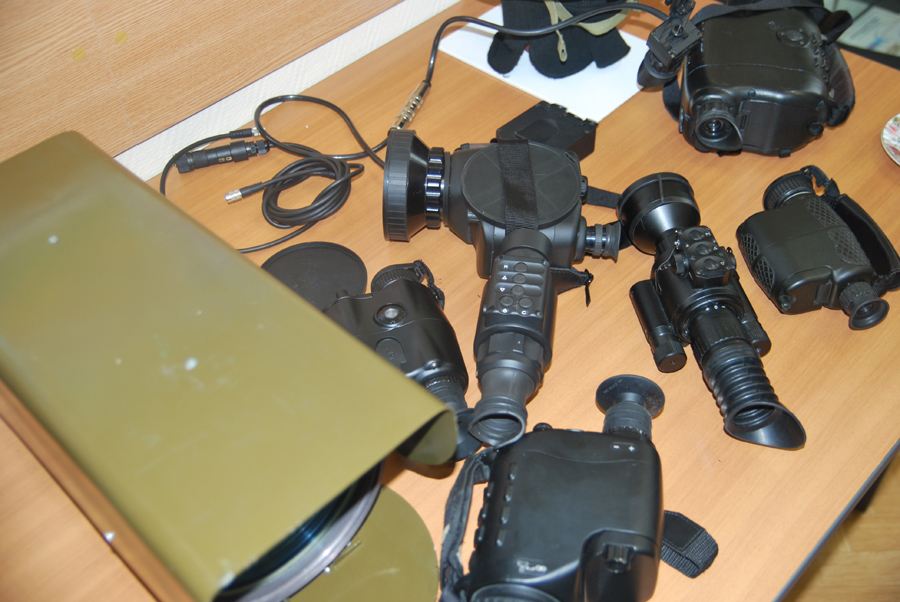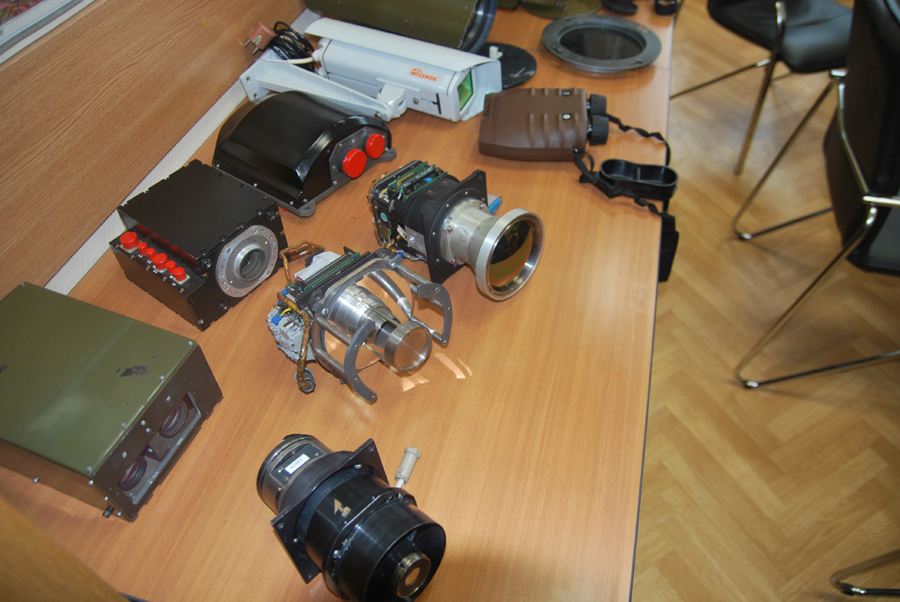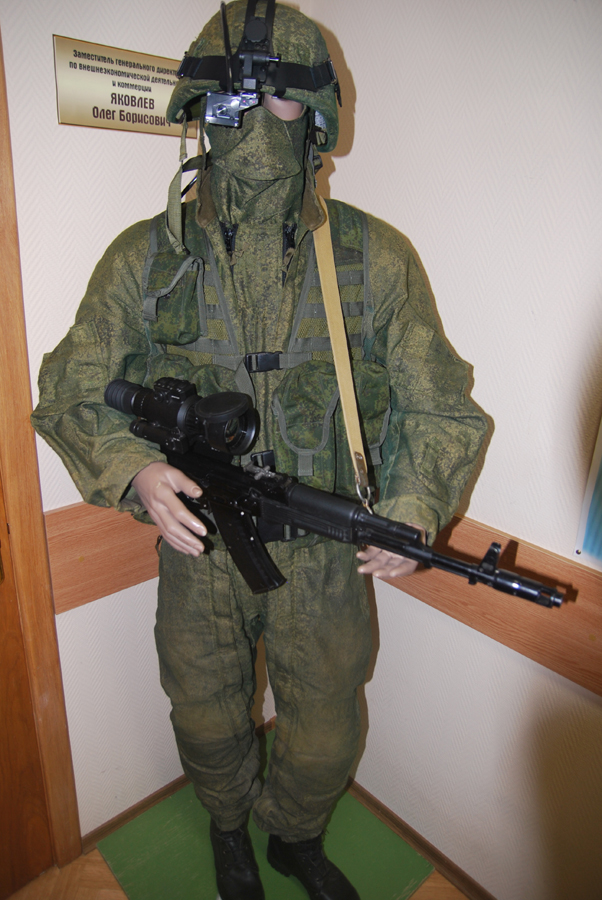How to install the app on iOS
Follow along with the video below to see how to install our site as a web app on your home screen.
Note: This feature may not be available in some browsers.
You are using an out of date browser. It may not display this or other websites correctly.
You should upgrade or use an alternative browser.
You should upgrade or use an alternative browser.
Global Future Soldier Programs.
- Thread starter Kompromat
- Start date
vostok
PDF THINK TANK: ANALYST

- Joined
- Jun 23, 2013
- Messages
- 10,291
- Reaction score
- 27
- Country
- Location
Russian Special Forces to Test New Thermal Scopes
MOSCOW, October 17 (RIA Novosti) – The Defense Ministry will start official tests of a new thermal vision scope as part of Russia’s futuristic combat kit later this month, the system’s developer said Thursday.
There are currently 160 prototype scopes at an army special forces (spetsnaz) facility near Moscow, said Oleg Yakovlev, advisor to the general director of the Tsiklon scientific research institute.
The scope, which can spot a target at a distance of 800-1,200 meters, is an essential component of the much touted cutting-edge Ratnik (Warrior) set and will cost around 1 million rubles ($30,000) per unit, he said.
Tests could last from several months to a year and a half, he added.
“We hope the final state tests will be a success and Ratnik’s thermal imaging system will be adopted in 2014,” Yakovlev said.
Russian defense officials previously said Ratnik had not been put into service yet due to delays in the fine-tuning of the new set’s light weapons.
The Ratnik kit is comprised of more than 40 components, including firearms, body armor and optical, communication and navigation devices, as well as life support and power supply systems.
It can be used by regular infantry, rocket launcher operators, machine gunners, drivers and scouts.
Russian Special Forces to Test New Thermal Scopes | Defense | RIA Novosti
MOSCOW, October 17 (RIA Novosti) – The Defense Ministry will start official tests of a new thermal vision scope as part of Russia’s futuristic combat kit later this month, the system’s developer said Thursday.
There are currently 160 prototype scopes at an army special forces (spetsnaz) facility near Moscow, said Oleg Yakovlev, advisor to the general director of the Tsiklon scientific research institute.
The scope, which can spot a target at a distance of 800-1,200 meters, is an essential component of the much touted cutting-edge Ratnik (Warrior) set and will cost around 1 million rubles ($30,000) per unit, he said.
Tests could last from several months to a year and a half, he added.
“We hope the final state tests will be a success and Ratnik’s thermal imaging system will be adopted in 2014,” Yakovlev said.
Russian defense officials previously said Ratnik had not been put into service yet due to delays in the fine-tuning of the new set’s light weapons.
The Ratnik kit is comprised of more than 40 components, including firearms, body armor and optical, communication and navigation devices, as well as life support and power supply systems.
It can be used by regular infantry, rocket launcher operators, machine gunners, drivers and scouts.
Russian Special Forces to Test New Thermal Scopes | Defense | RIA Novosti
proka89
FULL MEMBER

- Joined
- Jan 13, 2013
- Messages
- 1,409
- Reaction score
- 17
- Country
- Location
PROTECOP France
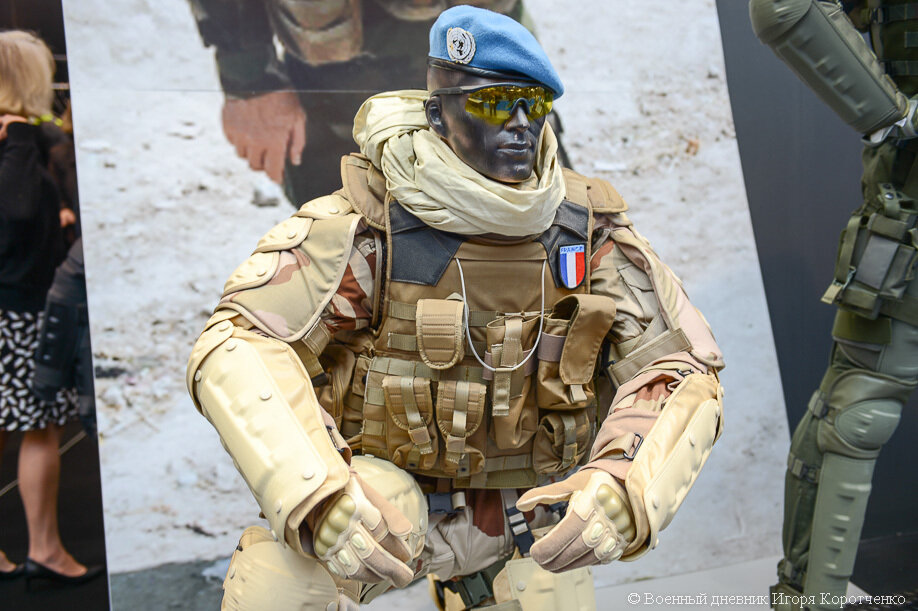
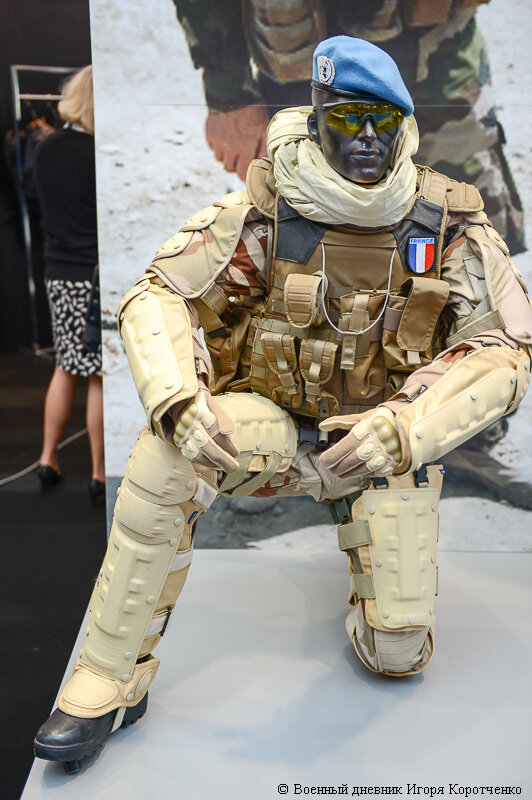
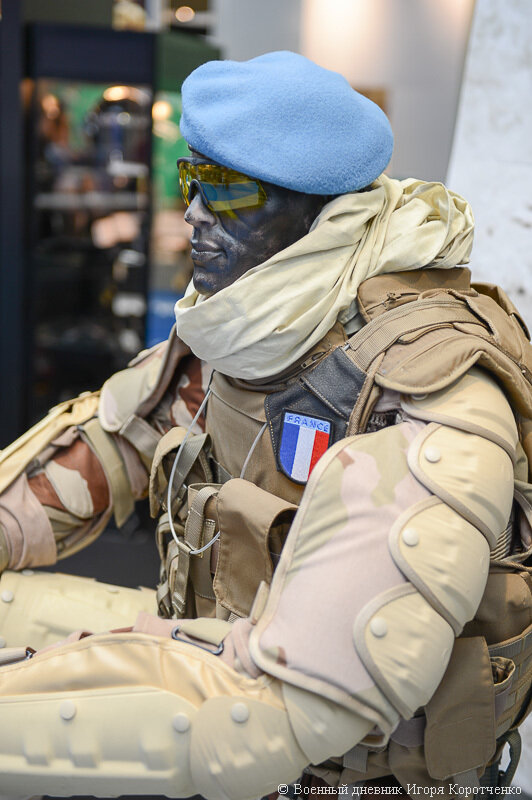
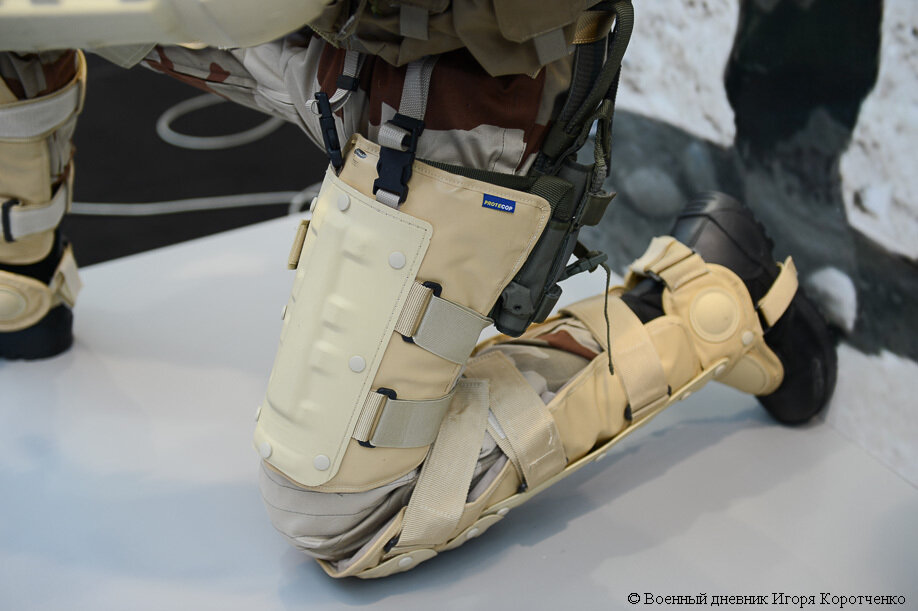


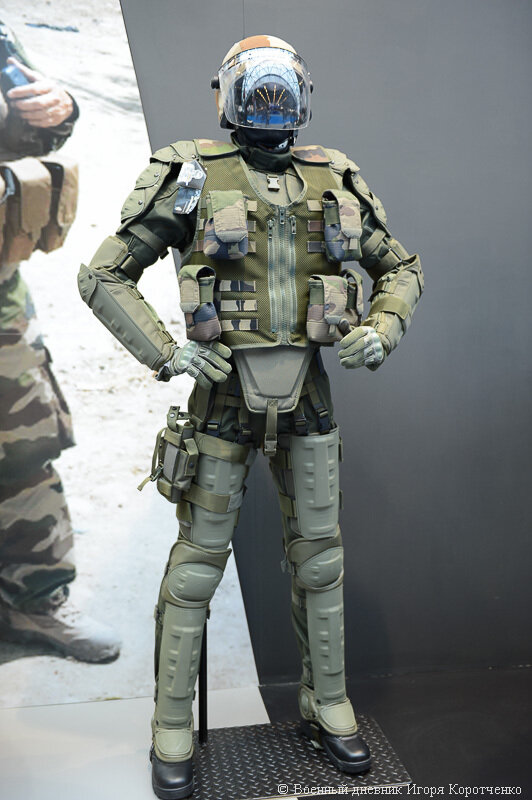
With more than 30 years of experience, PROTECOP is the leader in Law Enforcement and Ballistic Protection. First company in the world to have developed the concept of personal protective equipment for Law Enforcement, PROTECOP supplies the French market as well as more than 60 countries worldwide.
PROTECOP is also a partner with Safran in the FELIN program (supplyinh bulletproof vest and law enforcement equipment) team and supplies French Gendarmes in Afghanistan with the Heracles bulletproof vest.







Informant
SENIOR MEMBER

- Joined
- Sep 11, 2013
- Messages
- 4,433
- Reaction score
- -5
- Country
- Location
For some reason we still stick with militia style jackets for our forces, we are a professional army, atleast have holsters and pouches of a decent style and measurment. Not hanging unevenly, plus the placement of pockets and pouches is all over the place.
Reashot Xigwin
SENIOR MEMBER

- Joined
- Oct 20, 2012
- Messages
- 5,747
- Reaction score
- 0
Soldiers of the future (programs)
.

Infantry equipment hasn't improved much in the inter-war years or between the Korean War and the end of the Cold War.
WW2 advances focused on weapons and ammunition while Cold War developments focused on lighter rifles and better AT/AP grenade projection capability.
The accumulated opportunities for technical improvement and the concentration of 'few casualties' wars with highly trained infantry allowed for major modernisation efforts in the 1990's.
These modernisation efforts included clothes/bags, camouflage patterns, weapons, radios and even computers. The tank technology competition between NATO and WP had lost relevance and the AT weapon modernisation was degraded to merely one of many modernization efforts.
Germany exchanged almost the whole set of infantry equipment during the 90's, ("Soldat 95") but another type of modernisation attracted more global interest: High-tech modernization with altogether new tools based on micro-processors. The U.S. Army's "Land Warrior" program became the model for many comparable (and mostly less Sci-Fi) projects in other, mostly "Western" nations.
Australia - "Land 125" ak.a. "Soldier Combat System" a.k.a. "Wudurra"
Belgium - "BEST"
Canada - "Integrated Protective Clothing and Equipment" (IPCE), "Integrated Soldier Systems Project" (ISSP)
Czech Republic - "21st Century Soldier"
EDA (multinational) - "21st Century Soldier System"
France - "Fantassin à Équipements et Liaisons Intégrés" (Félin) ", "Systéme Combatant" (SC) 2005

Germany - "Infanterist der Zukunft"(IdZ)
India - "F-INSAS"
Israel - "ANOG", Integrated Infantry Combat Systems (IICS) a.k.a. "Dominator"
Italy - "Soldato Futuro"
NATO (multinational) - "NATO Soldier Modernization Plan"
Netherlands - VOSS (~Improved Operational Soldier System), "Soldier Modernisation Program" (SMP)
Norway - "NORMANS"(Norwegian Modular Arctic Network Soldier)
Poland - "Tytan"
 Romania - "Romanian Individual Fighting System" (RIFS)
Romania - "Romanian Individual Fighting System" (RIFS)
Russia "- ~"Project Wolf" a.k.a. ~"Soldier 2000"
Singapore - "Advanced Combatant Man System" (ACMS)
Slovenia - “Warrior of the 21st Century”
South Africa - "ANOG", "African Warrior"
Spain - "Combatiente Futuro" (Comfut)
Sweden - "MARKUS"
Switzerland "IMESS"
United Kingdom - "Future Integrated Soldier Technology" (FIST)
United States - Army: "Future Soldier", "Future Force Warrior" (FFW, succeeded by Future Soldier), "Objective Force Warrrior" (OFW, succeeded by FFW), Marines: "Marine Expeditionary Rifle Squad"

In short: Modernisation of the infantry is about as much in fashion as decimating the infantry was in fashion during the 90's. And this modernisation fashion emphasises a "system" approach instead of classic patchwork.

The funny outcome: Program managers needed to admit that reality is a bitch.
The components were envisaged as a part of a whole, but didn't mature all at the same time. This and requirements creep turned several of these projects into patchwork despite the systems approach. In fact, the U.S. "Land Warrior" program even had several generations of equipment in it.
These programs did a lot for better communication, camouflage, firepower, protection against climate.
The disadvantages were considerable as well.
The previously dirt-cheap infantry has become an arm with more expensive individual outfits than a Gucci-Rolex-tailored clothes pimps have.
The most expensive part of the old infantryman equipment was the rifle - now it's about a fraction as expensive as its sighting accessories alone.

The relatively high cost wasn't the only problem, of course. Electronics compatibility, weight, bulk, energy supply (= weight + builk + cost) and a disctraction from classic skills (as navigation with compass & map, guessing of distances) became serious drawbacks.
The weight problem is the ultimate problem, and drastic measures had be taken to keep the weight problem in check. Weight savings became a major objective of such programs and only about one in four to one in ten infantrymen actually get a near-full suite (with al those electronics), while most only got a 'light', reduced set.
The cost (and immaturity) problems also restricted several programs to the infantry and close troops. Logistics troops rarely get any of the new toys, for example.
It seems as if the quest for ever better infantry equipment will go on for a while. Programs will either be extended or get similar successor programs. The enormous innovation in the trekking and civilian "Tactical" markets as well as the almost global interest in infantry tool innovations lead to enough incremental innovations to keep program managers busy.
The model for the future maybe the U.S. Rapid Equipment Force (REF) that seeks good off-the-shelf equipment. It's apparently turning to just another bureaucracy, but the basic idea looks sound especially for small soldiers.
The use of a collection of off-the-shelf hardware mostly defies the "systems" idea, though. That nice (on paper) idea is probably already in the death row.
- - - - -
The whole stuff isn't new, of course. There was already such a thing in the 1950's. It led to a series of rifle development dead ends. 1959:

The interest in infantry modernization seems to overreach a bit. It should be obvious that training budgets and time as well as the allocation of resourceful recruits are more important for the infantry (and by now usually more deficient) than gadgetry.
Sven Ortmann
 P.S.: Yes, I think it's appropriate to mock some of the projects by adding pictures of Robocop and Star Wars Imperial Stormtroopers. Some real, official mock ups shown on conventions and exhibitions were no less ridiculous.
P.S.: Yes, I think it's appropriate to mock some of the projects by adding pictures of Robocop and Star Wars Imperial Stormtroopers. Some real, official mock ups shown on conventions and exhibitions were no less ridiculous.
Robert A. Henlein's original novel "Mobile infantry" suit may have had a huge subconscious effect as well. Others have pointed at the "Predator" movie alien as inspiration for cloaking and armament inspiration.
Defence and Freedom: Soldiers of the future (programs)
.
.

Infantry equipment hasn't improved much in the inter-war years or between the Korean War and the end of the Cold War.
WW2 advances focused on weapons and ammunition while Cold War developments focused on lighter rifles and better AT/AP grenade projection capability.
The accumulated opportunities for technical improvement and the concentration of 'few casualties' wars with highly trained infantry allowed for major modernisation efforts in the 1990's.
These modernisation efforts included clothes/bags, camouflage patterns, weapons, radios and even computers. The tank technology competition between NATO and WP had lost relevance and the AT weapon modernisation was degraded to merely one of many modernization efforts.
Germany exchanged almost the whole set of infantry equipment during the 90's, ("Soldat 95") but another type of modernisation attracted more global interest: High-tech modernization with altogether new tools based on micro-processors. The U.S. Army's "Land Warrior" program became the model for many comparable (and mostly less Sci-Fi) projects in other, mostly "Western" nations.
Australia - "Land 125" ak.a. "Soldier Combat System" a.k.a. "Wudurra"
Belgium - "BEST"
Canada - "Integrated Protective Clothing and Equipment" (IPCE), "Integrated Soldier Systems Project" (ISSP)
Czech Republic - "21st Century Soldier"
EDA (multinational) - "21st Century Soldier System"
France - "Fantassin à Équipements et Liaisons Intégrés" (Félin) ", "Systéme Combatant" (SC) 2005

Germany - "Infanterist der Zukunft"(IdZ)
India - "F-INSAS"
Israel - "ANOG", Integrated Infantry Combat Systems (IICS) a.k.a. "Dominator"
Italy - "Soldato Futuro"
NATO (multinational) - "NATO Soldier Modernization Plan"
Netherlands - VOSS (~Improved Operational Soldier System), "Soldier Modernisation Program" (SMP)
Norway - "NORMANS"(Norwegian Modular Arctic Network Soldier)
Poland - "Tytan"
 Romania - "Romanian Individual Fighting System" (RIFS)
Romania - "Romanian Individual Fighting System" (RIFS)Russia "- ~"Project Wolf" a.k.a. ~"Soldier 2000"
Singapore - "Advanced Combatant Man System" (ACMS)
Slovenia - “Warrior of the 21st Century”
South Africa - "ANOG", "African Warrior"
Spain - "Combatiente Futuro" (Comfut)
Sweden - "MARKUS"
Switzerland "IMESS"
United Kingdom - "Future Integrated Soldier Technology" (FIST)
United States - Army: "Future Soldier", "Future Force Warrior" (FFW, succeeded by Future Soldier), "Objective Force Warrrior" (OFW, succeeded by FFW), Marines: "Marine Expeditionary Rifle Squad"

In short: Modernisation of the infantry is about as much in fashion as decimating the infantry was in fashion during the 90's. And this modernisation fashion emphasises a "system" approach instead of classic patchwork.

The funny outcome: Program managers needed to admit that reality is a bitch.
The components were envisaged as a part of a whole, but didn't mature all at the same time. This and requirements creep turned several of these projects into patchwork despite the systems approach. In fact, the U.S. "Land Warrior" program even had several generations of equipment in it.
These programs did a lot for better communication, camouflage, firepower, protection against climate.
The disadvantages were considerable as well.
The previously dirt-cheap infantry has become an arm with more expensive individual outfits than a Gucci-Rolex-tailored clothes pimps have.
The most expensive part of the old infantryman equipment was the rifle - now it's about a fraction as expensive as its sighting accessories alone.

The relatively high cost wasn't the only problem, of course. Electronics compatibility, weight, bulk, energy supply (= weight + builk + cost) and a disctraction from classic skills (as navigation with compass & map, guessing of distances) became serious drawbacks.
The weight problem is the ultimate problem, and drastic measures had be taken to keep the weight problem in check. Weight savings became a major objective of such programs and only about one in four to one in ten infantrymen actually get a near-full suite (with al those electronics), while most only got a 'light', reduced set.
The cost (and immaturity) problems also restricted several programs to the infantry and close troops. Logistics troops rarely get any of the new toys, for example.
It seems as if the quest for ever better infantry equipment will go on for a while. Programs will either be extended or get similar successor programs. The enormous innovation in the trekking and civilian "Tactical" markets as well as the almost global interest in infantry tool innovations lead to enough incremental innovations to keep program managers busy.
The model for the future maybe the U.S. Rapid Equipment Force (REF) that seeks good off-the-shelf equipment. It's apparently turning to just another bureaucracy, but the basic idea looks sound especially for small soldiers.
The use of a collection of off-the-shelf hardware mostly defies the "systems" idea, though. That nice (on paper) idea is probably already in the death row.
- - - - -
The whole stuff isn't new, of course. There was already such a thing in the 1950's. It led to a series of rifle development dead ends. 1959:

The interest in infantry modernization seems to overreach a bit. It should be obvious that training budgets and time as well as the allocation of resourceful recruits are more important for the infantry (and by now usually more deficient) than gadgetry.
Sven Ortmann
 P.S.: Yes, I think it's appropriate to mock some of the projects by adding pictures of Robocop and Star Wars Imperial Stormtroopers. Some real, official mock ups shown on conventions and exhibitions were no less ridiculous.
P.S.: Yes, I think it's appropriate to mock some of the projects by adding pictures of Robocop and Star Wars Imperial Stormtroopers. Some real, official mock ups shown on conventions and exhibitions were no less ridiculous.Robert A. Henlein's original novel "Mobile infantry" suit may have had a huge subconscious effect as well. Others have pointed at the "Predator" movie alien as inspiration for cloaking and armament inspiration.
Defence and Freedom: Soldiers of the future (programs)
.
Nike
ELITE MEMBER

- Joined
- Mar 28, 2013
- Messages
- 13,866
- Reaction score
- 24
- Country
- Location
Infantry units has back to medieval era with more armor and surely added more weight, but with ever increased firepower and lethality  and every country has their own programs and has unique characteristic which can differ from country to country.
and every country has their own programs and has unique characteristic which can differ from country to country.
 and every country has their own programs and has unique characteristic which can differ from country to country.
and every country has their own programs and has unique characteristic which can differ from country to country.RAMPAGE
SENIOR MEMBER

- Joined
- Oct 30, 2012
- Messages
- 5,848
- Reaction score
- 4
- Country
- Location
Some pictures from China's Future Soldier Program.
Once again our Chinese friends come up with the best solutions.
If any Chinese member can provide more details about this program, please do !!!
@ChineseTiger1986 @cnleio @SinoSoldier
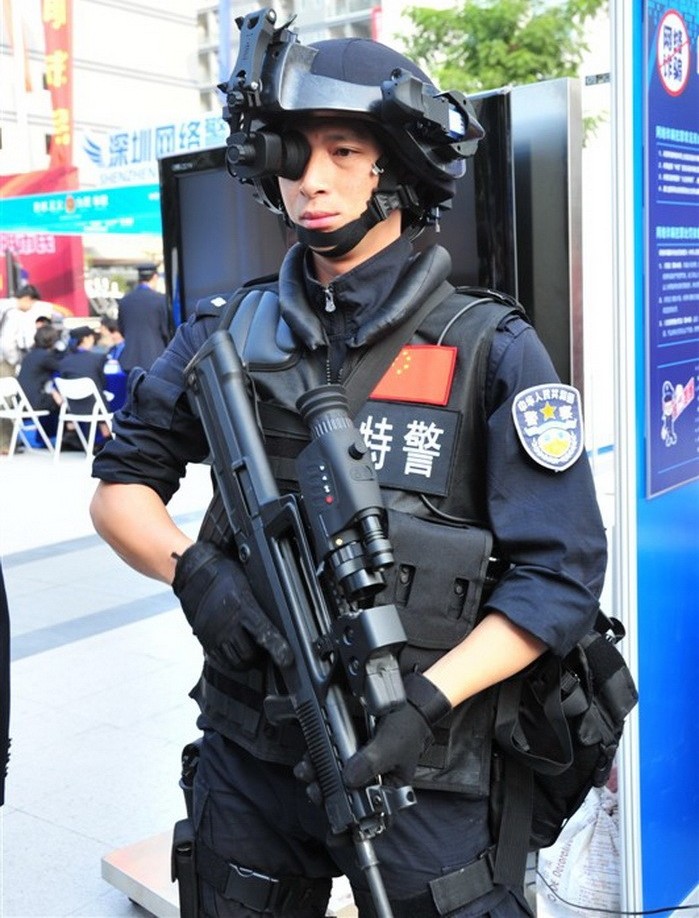
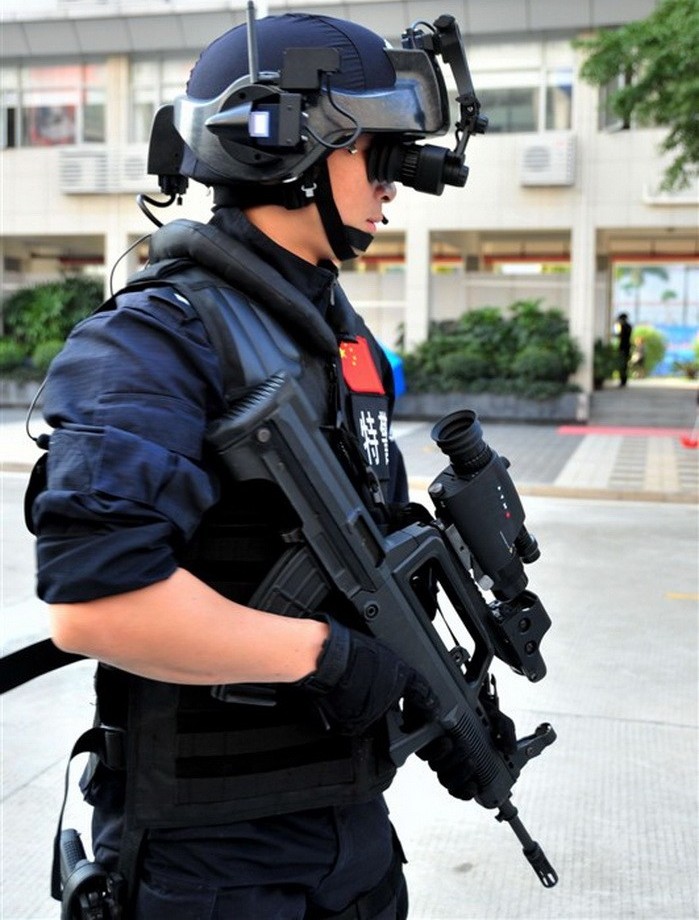


Once again our Chinese friends come up with the best solutions.

If any Chinese member can provide more details about this program, please do !!!
@ChineseTiger1986 @cnleio @SinoSoldier




Last edited:
Mahmoud_EGY
SENIOR MEMBER

- Joined
- Feb 22, 2012
- Messages
- 2,546
- Reaction score
- 1
- Country
- Location
FELIN combat system
Hakan
RETIRED INTL MOD

- Joined
- Feb 9, 2014
- Messages
- 6,271
- Reaction score
- 39
- Country
- Location
Similar threads
- Replies
- 0
- Views
- 104
- Replies
- 0
- Views
- 149
- Replies
- 0
- Views
- 193


